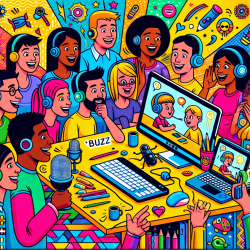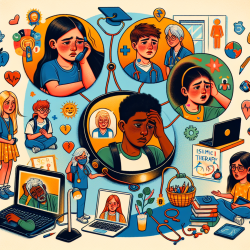The COVID-19 pandemic has significantly altered many aspects of daily life, including how children engage with screen media. A recent study titled "Children’s screen and problematic media use in the United States before and during the COVID-19 pandemic" provides valuable insights into these changes. As practitioners working with children and families, understanding these shifts is crucial for supporting healthy media habits.
The Impact of Increased Screen Time
The study conducted by Eales et al. (2021) highlights a notable increase in both screen media use (SMU) and problematic media use (PMU) among children aged 2–13 years during the pandemic. With distance learning becoming a norm and social interactions moving online, screens became an indispensable part of children's lives. This shift was not without its challenges, as increased screen time has been linked to various developmental concerns.
Key Findings
- Significant Increase in SMU and PMU: The study found a medium effect size increase in both SMU and PMU, particularly among school-age children.
- Influencing Factors: Factors such as distance learning, child behaviors, parental mediation, and positive media reinforcement played roles in these changes.
- Parental Mediation: The role of parents in mediating their children's media use was highlighted as a critical factor in managing screen time effectively.
Implications for Practitioners
This research offers several implications for practitioners aiming to support families in navigating children's screen time:
Encourage Parental Involvement
Practitioners should emphasize the importance of active parental mediation. Encouraging parents to engage with their children during screen time can transform it from a passive activity into an interactive experience that promotes learning and development.
Create Balanced Media Plans
A personalized media plan that balances educational content with leisure activities can help mitigate the negative effects of excessive screen time. Practitioners can guide parents in selecting age-appropriate content that aligns with their child's developmental needs.
Pursue Further Research
The findings from this study underscore the need for ongoing research into the long-term effects of increased screen time on child development. Practitioners are encouraged to stay informed about emerging studies and incorporate new insights into their practice.
The Path Forward
Navigating children's screen time post-pandemic requires a collaborative effort between practitioners, parents, and educators. By leveraging research insights and fostering open communication, we can support families in establishing healthy media habits that enhance child development.










